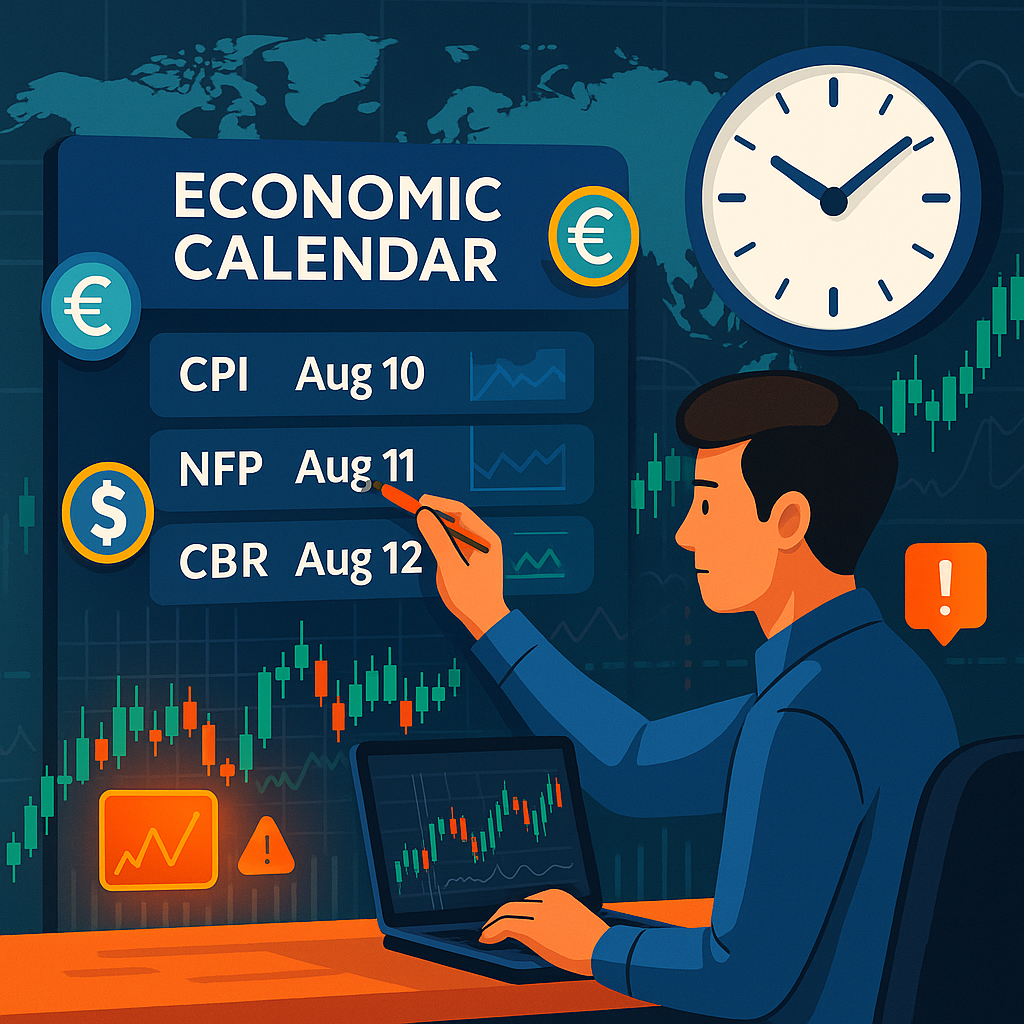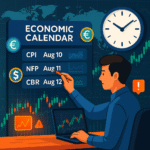In the world of forex and commodities, timing is everything. Traders who understand the economic calendar don’t just react to markets — they anticipate them. Every week, governments and central banks release critical data that can spark volatility, shape trends, and shift trader sentiment. The economic calendar helps turn that information into a strategic edge.
This post explores what the economic calendar is, how it works, and why successful traders use it as part of their daily routine.
What Is the Economic Calendar?
The economic calendar is a schedule of upcoming financial and economic events — from central bank announcements to employment reports. Each event shows the expected release time, prior data, forecast, and actual result once published.
Key calendar events include:
- Central bank interest rate decisions
- Inflation reports (Consumer Price Index, Producer Price Index)
- Jobs data (Non-Farm Payrolls, unemployment rates)
- GDP releases
- Trade balance figures
- Manufacturing and service sector indices
These events often have strong implications for currency valuation, commodities demand, and global risk sentiment.
Why It Matters to Traders
Market-moving news typically arrives with scheduled events. By watching the calendar, traders can:
- Prepare for volatility before key reports
- Avoid entering trades during uncertain periods
- Align technical setups with fundamental timing
- Optimize entry and exit strategies based on news cycles
For example, a trader planning a EUR/USD trade will check when the European Central Bank (ECB) announcement is due. If a rate hike is expected, they might plan for bullish euro movement — but stay cautious around the release time to manage slippage and spreads.
High-Impact vs. Low-Impact Events
Not all calendar events shake the market equally. Traders often filter events by impact level:
- High-impact: Interest rate decisions, jobs reports, inflation data — can cause major moves and are crucial for short-term trading.
- Medium-impact: Trade balance, retail sales — often create movement if results surprise forecasts.
- Low-impact: Consumer sentiment surveys, minor sector data — rarely cause strong price swings but may add context.
Knowing the difference helps traders focus attention where it matters most.
How to Read the Calendar Correctly
A quality economic calendar displays:
- Date and time (adjusted to your time zone)
- Currency affected (e.g., USD, EUR, GBP)
- Event name (e.g., CPI, GDP)
- Previous value
- Forecasted value
- Actual result (once released)
Traders compare forecast vs. actual numbers. A big deviation often leads to volatility:
- If U.S. inflation is forecast at 3.0% but comes in at 4.2%, the dollar might strengthen due to rate hike speculation.
- If job data misses expectations badly, the market may sell off risky assets and shift to safe havens.
Building a Daily Routine Around It
Professional traders use the calendar as a guide for their daily planning:
- Scan high-impact events each morning
- Identify affected currency pairs
- Plan trades before or after releases
- Avoid trading seconds before the release unless strategy is news-based
- Use pending orders (e.g., buy stop or sell stop) for breakout trades post-news
Integrating the calendar into a routine leads to more deliberate and less reactive trading.
Platforms with Reliable Calendars
Some of the best sources for economic calendar data include:
- Forex Factory – color-coded impact ratings and detailed release history
- Investing.com – customizable and includes global data
- DailyFX – covers forex-relevant news with expert commentary
- Trading Economics – macroeconomic calendar with forecasts and analysis
- MetaTrader Plugins – economic calendar integration via MT4/MT5 indicators
These platforms allow traders to set alerts and adapt the calendar to their strategy.
Strategy Ideas Using the Calendar
Traders can deploy targeted strategies around scheduled releases:
- Breakout strategy: Use stop orders above and below current price before major releases.
- Fade the news: If price spikes quickly, trade in the opposite direction expecting a retracement.
- Sentiment trade: Follow momentum driven by better-than-expected results and ride short-term trends.
Each strategy depends on risk appetite and experience level.
Common Mistakes to Avoid
Even seasoned traders can misuse the calendar:
- Ignoring key data releases: Leads to unexpected volatility exposure.
- Trading blindly during releases: High slippage and emotional decisions.
- Misinterpreting forecast vs. actual impact: Not all deviations result in movement — context matters.
Staying informed and disciplined is key to making the calendar a useful tool, not a source of confusion.
Final Thoughts: Trading the Clock, Not Just the Chart
The economic calendar is more than just a schedule — it’s a roadmap for volatility. Traders who read it effectively know when to trade, when to wait, and how to match their technical analysis with real-world economic forces.
In markets driven by data and speculation, timing often separates winning trades from whipsaw losses. The calendar keeps traders grounded and prepared — two qualities that never go out of style.
Integrate it into your daily strategy and see how much more confident your decisions become.




